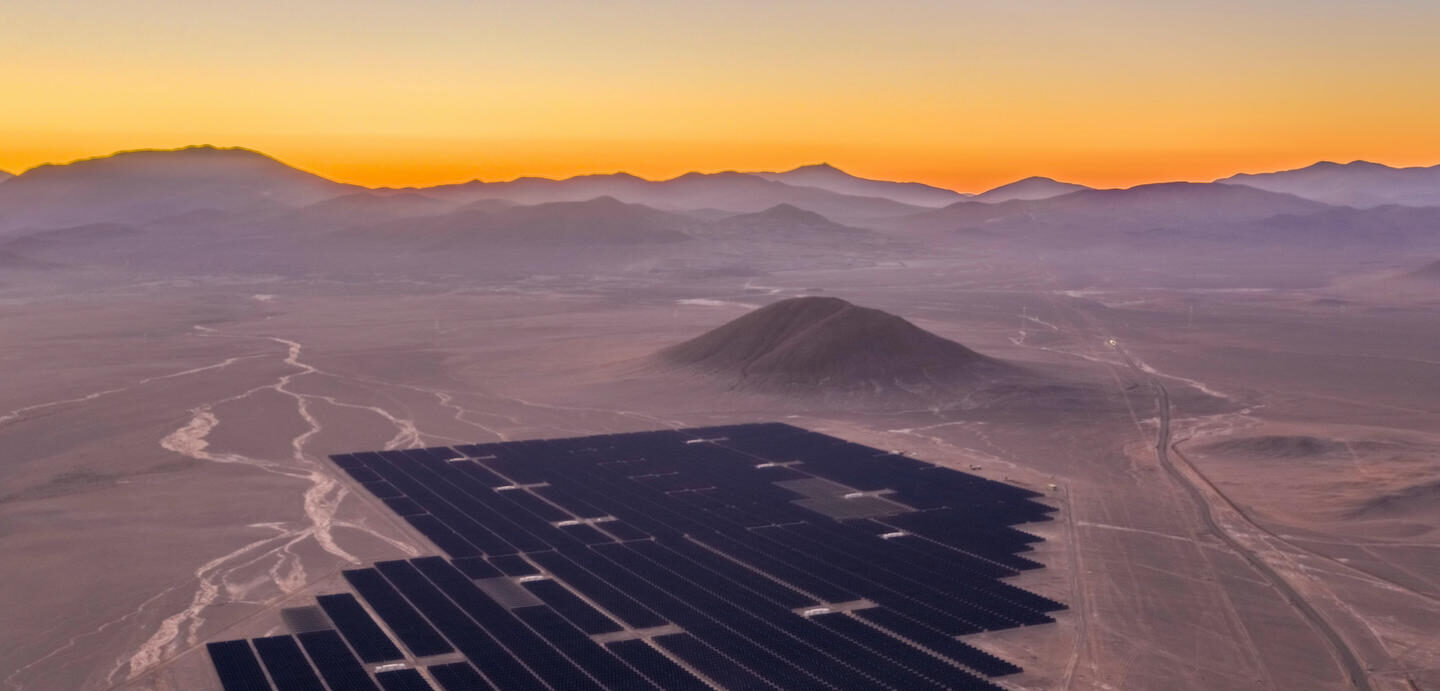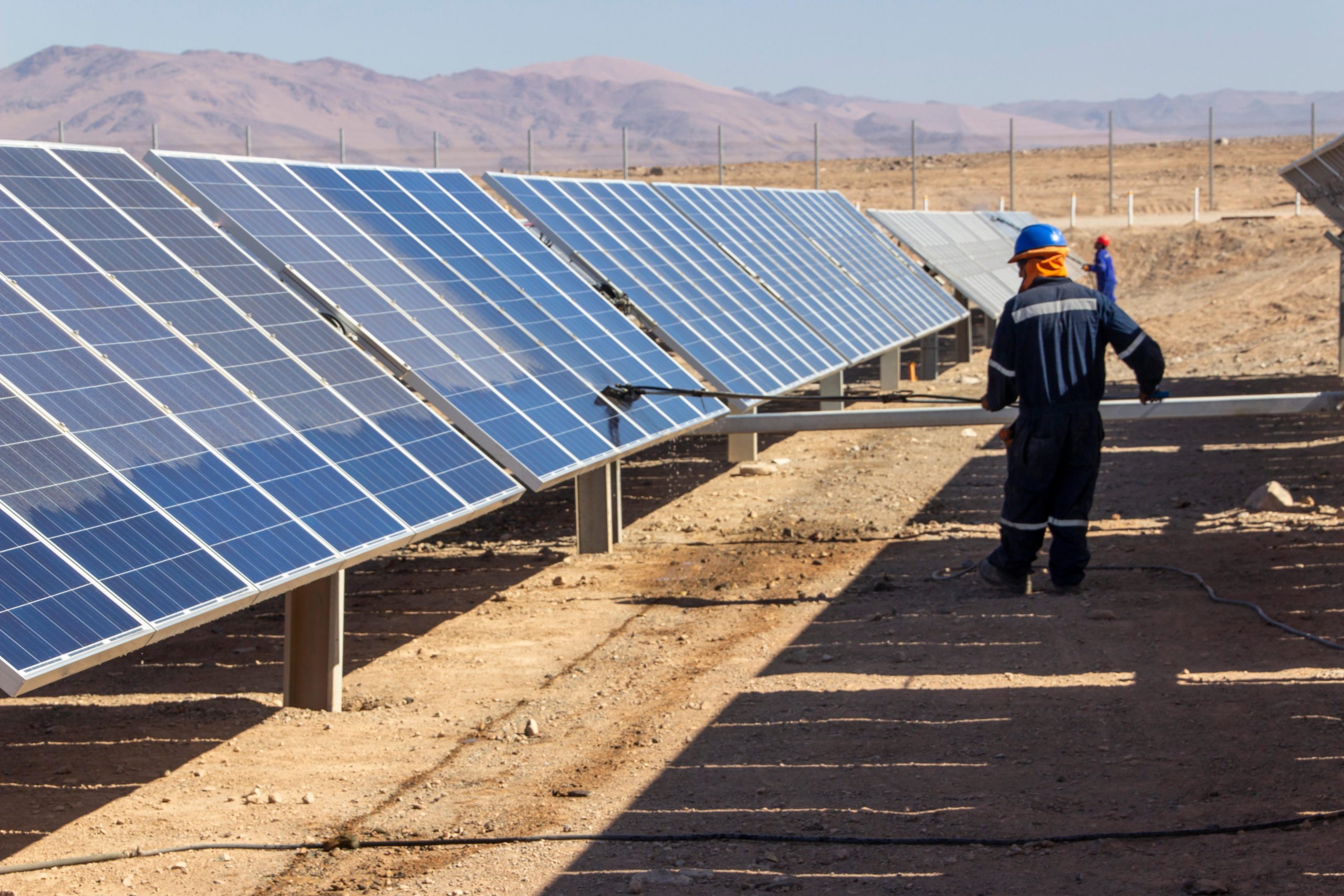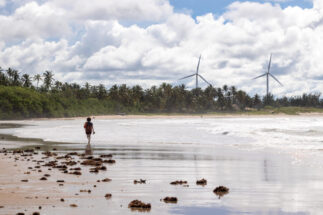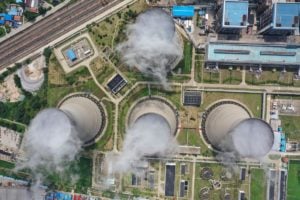Latin America has almost everything it needs to make a transition to renewables: ambitious targets, huge solar and wind potential and growing local industries. But finance for the region’s transition is still insufficient, and numerous barriers will need to be overcome to reverse this.
The International Energy Agency (IEA) estimates that emerging countries, a category that includes much of Latin America and the Caribbean, will need US$1 trillion per year between now and 2050 to finance their energy transition, compared to the $150 billion made available for clean energy investment in 2020.

Achieving that goal will require a prominent role for the private sector, which is projected to drive more than 70% of clean energy investments, according to the IEA. Financing institutions such as the CAF Development Bank of Latin America will also play a part, though a more limited role in energy investments is expected from the public sector.
Along with CAF, the Inter-American Development Bank, the Export-Import Bank of China and the US Agency for International Development have been the main players in energy financing in Latin America over the past two decades, figures from the Latin American Economic Observatory (OBELA) show. However, finance has not only been insufficient but also heavily skewed towards investments in fossil fuels over renewables. An increase in funds must therefore be accompanied by a redirection, experts agree.
“It’s a political problem, not an economic one,” said Leonardo Stanley, a researcher at Argentina’s Centre for the Study of State and Society (CEDES). “Looking at the costs, it is more rational to invest in renewables than in fossil fuels. But the decision on which sectors the money goes to is political, based on the lobbying of the oil companies.”
The transition in Latin America
Latin America’s energy sector is responsible for nearly half of the region’s greenhouse gas emissions, with around 25% of these coming from electricity generation using fossil fuels, such as coal, oil and gas. Transport also accounts for a significant share of these energy-related emissions.
Governments in the region have committed to reduce these emissions under the Paris Agreement on climate change. In fact, 15 countries have already signed up to the target of reaching at least a 70% share of renewable energy in their energy mix by 2030 under the Renewables in Latin America and the Caribbean (RELAC) initiative.

Latin America has some factors in its favour as it looks to accelerate its energy transition. The region has abundant reserves of strategic minerals, such as lithium, needed to produce batteries and renewable energy equipment, as well as outstanding potential in solar and wind energy, and green hydrogen production.
However, without increased funding achieving these targets will be very difficult, as Latin American leaders stressed at last year’s COP26 climate summit. Their argument is that, as the region is responsible for less than 10% of global emissions, it should therefore receive more support on its path to renewables.
Rebecca Ray, a researcher at Boston University’s Global Development Policy Center, argues that China can play a growing role in Latin America’s post-pandemic energy transition, in line with investments already made in solar and wind energy, electric vehicles and lithium production.
China invested US$58 billion in Latin America’s energy sector between 2000 and 2020, over 15% of which went towards renewables, according to Boston University data. Argentina, Brazil, Bolivia and Chile have been the main recipients of these investments.
“If governments are looking to expand the renewables sector, they will find a partner in China. But it’s up to them to push the projects and frame the relationship with China in that way,” said Ray. “Chinese investors are not going to come and convince governments to push renewables.”
Meanwhile, investment in fossil fuels continues, with most governments deciding to use natural gas as a transition fuel from oil and coal. This means public and private funds going into gas infrastructure projects that could instead be used for renewables.
“For countries in the region that have a lot of income and jobs tied to fossil fuels, talking about transition is difficult,” said Jeremy Martin, vice president for energy and sustainability at the Institute of the Americas, a US think-tank. “Fossils are easy money, compared to moving to renewables.”
Barriers to transition
In addition to commitments by governments to drive an energy transition, mobilising finance in Latin America will require overcoming a number of obstacles, experts agree. The first and most important is the cost of capital, which is higher than in developed countries and other emerging regions.
This is due to several factors, such as the volatility of many economies in the region, the constant risks of devaluation, underdeveloped financial systems and political instability, as Mauricio Cardenas, a former finance minister of Colombia, and Luisa Palacios, a researcher at Columbia University, suggested recently in Americas Quarterly.
Such is the case in Argentina, where 91 renewable energy projects now face an uncertain future amid the country’s economic crisis, and in Mexico, where energy investors may be baffled by President Andrés Manuel López Obrador’s recent moves to completely reform the energy sector.
“Dealing with these constraints is particularly important because financing the energy transition is not like financing fossil fuels,” argue Cardenas and Palacios. “In extractive industries state-owned enterprises or foreign multinationals are ready to invest because rents compensate for the higher macro and political risks.”
Much more capital is needed, and the challenge is where it is going to come from. For now, it’s all just promises
The transition is also a fiscal challenge for governments in the region, whose economies are heavily dependent on fossil fuel exports – unlike renewables, which are not yet major sources of tax revenue and require government support, such as subsidies, for their development.
Reversing these trends – and entrenched habits – will require broad reforms of the region’s fiscal systems, redirecting current fossil fuel subsidies towards clean energy, as Stanley argued in an analysis for the Fundación Carolina, a Spain-based organisation. Governments should even consider blocking public and private sector financing for fossil fuels, he added.
For Carlos de León, a Mexican economist specialising in the energy sector, it is very difficult for countries that depend on oil revenues, such as Mexico and Brazil, to find incentives to invest in renewable energies. He points to electric vehicles are one of the few exceptions, with policies driving the switch to electric increasingly prevalent across the region.
“The transition is not an isolated problem in one country, it is all over Latin America,” says de León. “Much more capital is needed, and the challenge is where it is going to come from – whether the region is going to align itself more with China as an ally in its transition, or if new investment funds are going to be created. For now, it’s all just promises.”









